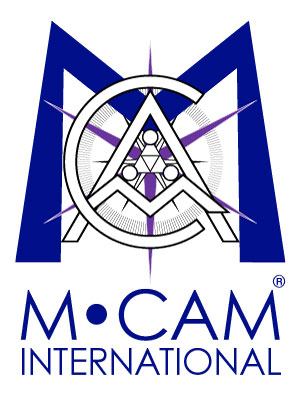
Innovation α® Explained
AT M·CAM, WE SEE VALUE WHERE OTHERS DON’T THINK TO LOOK
Through intelligent machines, Innovation α® is the application of artificial intelligence to innovation data. It comes from our visibility to what is ordinarily opaque to financial markets: the inventions that power the economy.
Innovation α® is a quantitative analysis technology to understand market dynamics heretofore inaccessible to investors. For over two decades, M·CAM® has measured the global quality and market deployment of intangible assets in publicly traded and private firms. This measurement has contributed to market insights and regulatory reform ranging from accounting, to tax, to world trade econometrics. Aggregating innovation data from over 160 countries and assessing it for its uniqueness, market fitness, and its utility to create marginal price advantage, M·CAM® has commercially deployed its unique unstructured data-mining technologies for banking, trading, and advisory programs internally and for third parties. The CNBC IQ100 Index powered by M·CAM® is now the Innovation α® US Index.
In 2019, Solactive began publishing the Innovation α® US Index, Innovation α® Global Index and the Martin Global Innovation Equity (MGIE) Trade War Index.
The Operating System of the Knowledge Economy
Referenced in this video: The Dow is Dow Jones Industrial Average (DJIA), Nasdaq is The Nasdaq Stock Market (NASDAQ), and the Russell is The Russell 1000 Index.
Performance data quoted represents past performance; past performance is not an indication of future results. Indexes are not an investment vehicle.
When Smart Beta is not enough... Innovation α®

Innovation α® Indices
UNLOCKING VALUE FROM UNCONVENTIONAL DATA
Innovation α® United States Index
Between October 25, 2016 and September 30, 2018 the Innovation α® United States Index was published as the CNBC IQ 100 Index.
THE EQUITY MARKETS FIRST QUANTITATIVE INDEX!
Powered by Innovation α®, the purpose of the Innovation α® United States Index is to measure the effect of innovation and proprietary protection of innovation maintained and utilized by companies across the equity markets.
The creation of this index involves M·CAM® selecting the 100 innovation leaders by applying M·CAM’s proprietary algorithms to companies in the Russell 1000. The Innovation α® United States Index is an exclusive, data-driven index of the 100 large-cap companies that have a market advantage based on their ability to invest in, control, and deploy intellectual property. Companies are selected using a proprietary unstructured data analysis algorithm derived from Dr. David Martin’s patented methodology to establish intangible asset quality and market fitness. The underlying principle of the strategy is to select those companies optimized for marginal revenue control through high-quality intangible assets.
More information about the Innovation α® Index can be found in the white paper which lays out M·CAM’s methodology in detail.
For more details, contact 434-979-7240.
Innovation α® Global Index
The Innovation α® Global Index provides visibility in a large- and mid-cap developed market equities strategy based on the quality of innovation developed and used by companies. Using Innovation α®, a proprietary unstructured data analysis algorithm, INAGP’s index seeks to measure the absolute quantitative intangible asset position of MSCI ACWI companies within both the supply chain and distribution competitive space, then selects the company holding the better asset portfolio. The underlying principle of the strategy is to seek those companies optimized for marginal revenue control through high-quality intangible assets.
The INAGP’s index strategy was modeled by Dr. David Martin and relies exclusively on public information. The model from which the strategy was derived is based on historical innovation and market data collected and analyzed by M·CAM® since 1998.
Martin Global Innovation Equity (MGIE) Trade War Index
The TWARP Index tracks innovation-rich companies with state-sponsored patronage that have the potential to benefit from trade wars based on their governmental sponsorship or partnerships. TWARP’s index is powered by Innovation α®—the same algorithm behind the CNBC IQ 100—which is designed to take into account international trade credits, offset agreements, and mandatory technology transfer agreements when determining companies that have the potential to maintain their self-interest during trade disputes. While there is general agreement that intellectual property should be respected across the globe, many nations seek and achieve protectionism through a variety of mechanisms, including excessive patent filing to obscure genuine innovation, forced technology transfer or restriction, reverse engineering and theft, and selective judicial enforcement. During trade disputes, the presence or absence of intellectual property can offer little protection against government actions. The companies included in the index that powers TWARP may be better-suited to weathering trade disputes between nations, thanks to their state-sponsored patronage.

